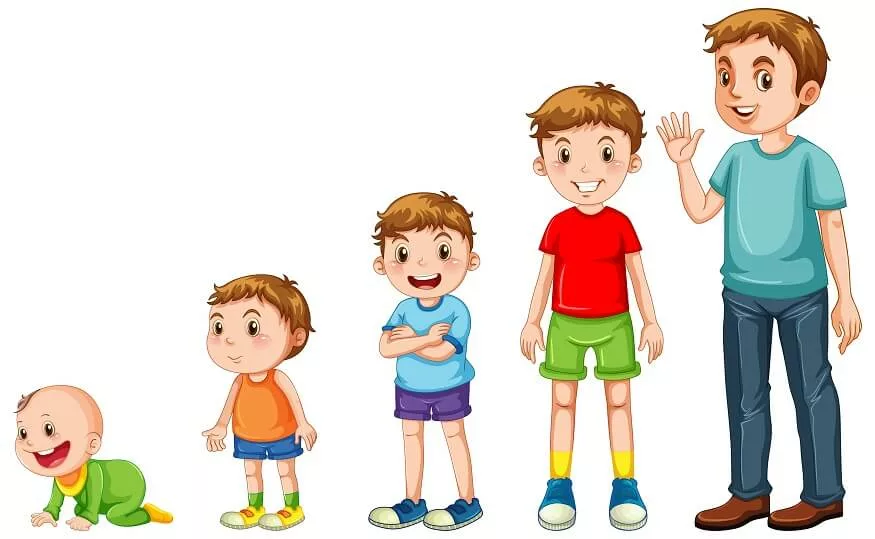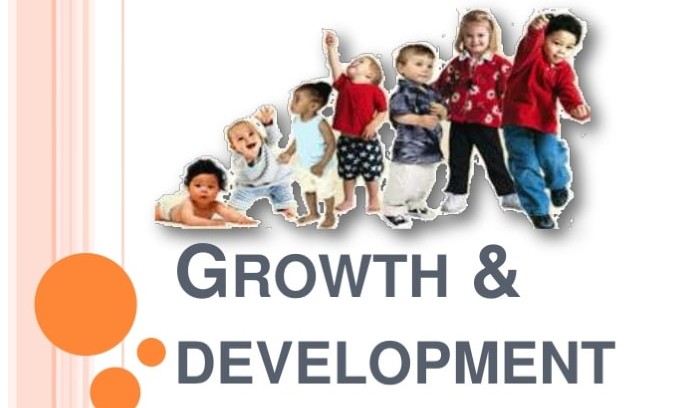Growth and Development // Its Principles//CTET// anyother teaching exams
Growth refers to quantitative changes in the body.
According to the Crow and Crow(1962)
Growth refers to structural & physiological
changes”.
The main indicators of growth are increase in height, weight and changes in the body structure and body proportions.
Changes continue to occur in all domains of development but changes that take place in the physical development of children become most visible and apparent.
One of the important features of growth is that these changes are measurable.
The sequence, pattern and direction of changes in growth are common to all children although the rate of growth may vary from one child to another.

The terms growth and development are used interchangeably, but they are different
and neither takes place alone.
Growth refers to an actual biological or quantitative increase in size, such as the
enlargement of the body or any of its component parts by an increase in the number
of cells.
Increased head size, arm and leg length and weight are what are generally
referred to as result of the growth process.
Thus growth is confined to the physical
changes which are quantifiable.

WHAT IS DEVELOPMENT?
Development refers to a continuous
process of changes through which task
managing abilities of the individual are
polished resulting in experiences and
learning.
Development refers to qualitative changes in the body as well as changes in behaviour and attitude.
It is difficult to measure or quantify development as these
changes are not quantitative.
It is important to note that physical growth is
measurable quantitatively; however, certain changes such as cognitive and socioemotional maturity may not be measured in quantitative terms.
These need to be
measured in qualitative terms.
Development is governed by certain principles.
Principle of Growth and Development :
PRINCIPLES OF GROWTH AND DEVELOPMENT
Development is Continuous:
The process of growth and development continues from the conception till the
individual reaches maturity. Development of both physical and mental traits
continues gradually until these traits reach their maximum growth. It goes oncontinuously throughout life. Even after maturity has been attained, development
does not end.
Development is Gradual:
It does not come all on a sudden. It is also cumulative in nature.
Development is Sequential / Predictable pattern:
Development is sequential or orderly. Every species, whether animal or human,
follows a pattern of development peculiar to it. This pattern in general is the same
for all individuals. The child crawls before he creeps, stands before he walks and
babbles before he talks.
Rate of Development Varies Person to Person:
Rate of development is not uniform. Individuals differ in the rate of growth and
development. Boys and girls have different development rates. Each part of the
body has its own particular rate of growth. There are periods of great intensity and
equilibrium and there are periods of imbalance.
Development according to Growth Gradients:
Diffrentiation: Development proceeds from general to specific: learn to walkbefore
they skip
Cephalo-caudal: growth occurs from top to down; infants gain control over head
movement then the control over trunk and leg movements.
Proximo-distal: growth occurs from centre to periphery; gain control of leg
movements then foot and finally toe movements.
With respect to emotional behaviour infants approach strange and unusual objects
with some sort of general fear response. Later, their fears become more specific and
elicit different kinds of behaviour, such as, crying, turning away and hiding etc.
Inter-correlation in Different Aspects of Development:
Generally, it is seen that the child whose mental development is above average, is
also superior in so many other aspects like health, sociability and special aptitudes.
Growth and Development is a Product of Both Heredity and Environment:
Development is influenced by both heredity and environment. Both are responsible
for human growth and development.
Development in Sensitive and Critical Periods is Important:
There are specific periods in development when potential for growth is maximal.
Potentials, be they physical, mental or emotional can be seriously damaged by
unfavourable conditions in the critical or sensitive periods.
Development occurs at Different Rates:
There are slow, medium, and rapid rates of development depending on the age and
environmental influences.
There is a Constant Interaction between All Factors of Development:
Development in one area is highly related to development in other areas. For
example, a child who has a good health can be active socially and intellectually.















0 Comments